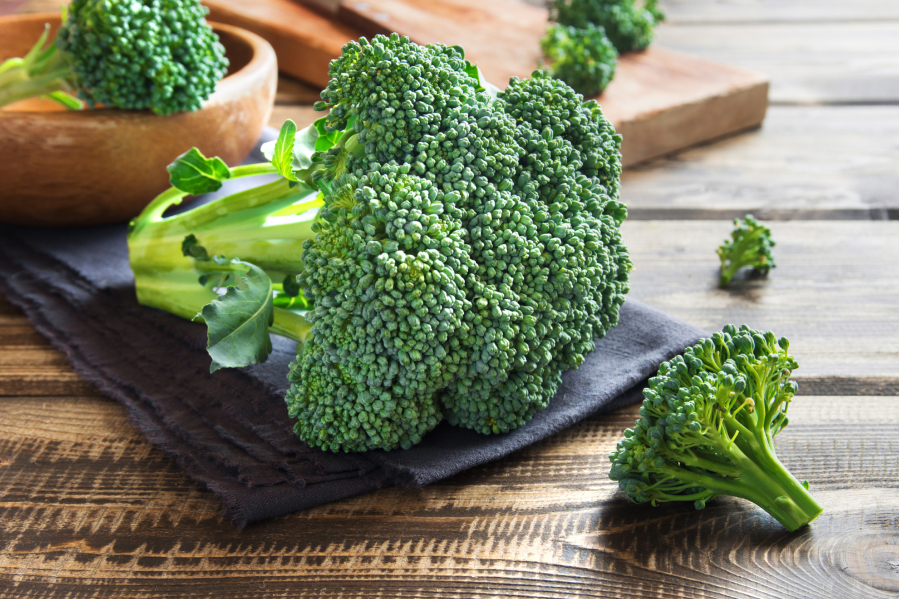Kids and adults alike have long eschewed the “little trees,” but I suspect their reticence came from a soggy, overcooked presentation. Broccoli is one of the healthiest vegetables around, and it deserves better.
Broccoli started out as a wild cabbage, and it has been cultivated and appreciated for its health benefits since the sixth century. Ancient Romans considered it a delicacy, and southern Italian immigrants brought it to the United States, where it did not catch on with Americans until the 1920s.
Broccoli is a member of the cruciferous family, along with cauliflower, cabbage, kale and Brussels sprouts. The most familiar is Calabrese broccoli, named for a region in Italy. It has large green heads and thick stalks. Broccoli Rabe has florets on long, thin stems, while broccoli rapini, has fewer florets and a mustard-like flavor. Broccoflower, a cross between broccoli and cauliflower, is pale green with densely packed heads like cauliflower. Chinese broccoli has broad, glossy, blue-green leaves with long, crisp, thick stems and a small head. If you run across Broccolini, it’s a broccoli and Chinese kale hybrid, with a long, juicy stem topped with tiny florets.
Broccoli has a unique flavor and a unique density of nutrients, including vitamins A, C and K, calcium, folate, iron and a multitude of micronutrients. A good source of fiber, one cup contains 55 calories, 5 grams of carbohydrates and no fat.



